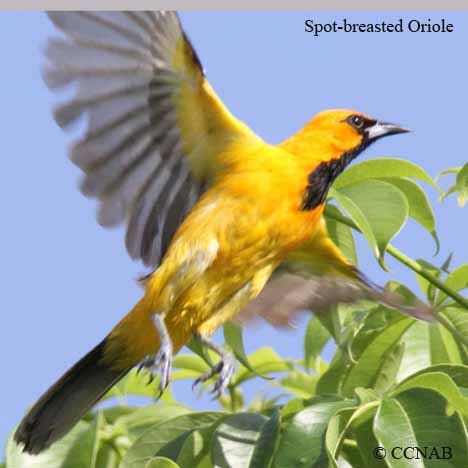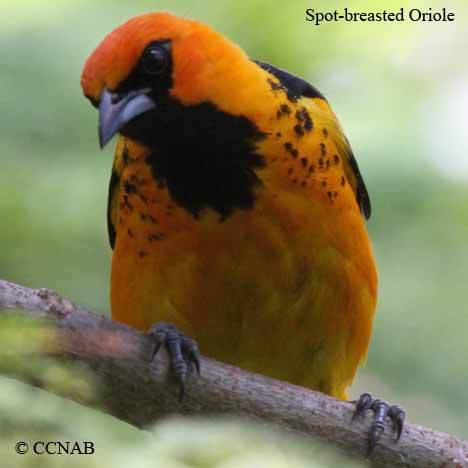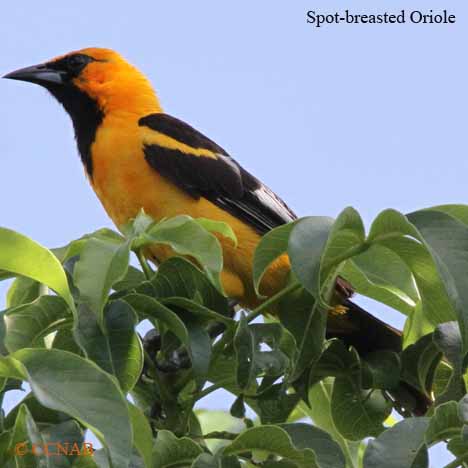North American Bird Search Box
This search box can be used to find bird species using bird's english, french or latin name, or to identify bird by its 4 letter Alpha Code
Field Guide for all the Birds of North America
Spot-breasted Oriole
4 Letter (english names) Alpha Code: SBOR (2)
Oriole maculé
Icterus pectoralis
Information, images and range maps on over 1,000 birds of North America, including sub-species, vagrants, introduced birds and possibilities
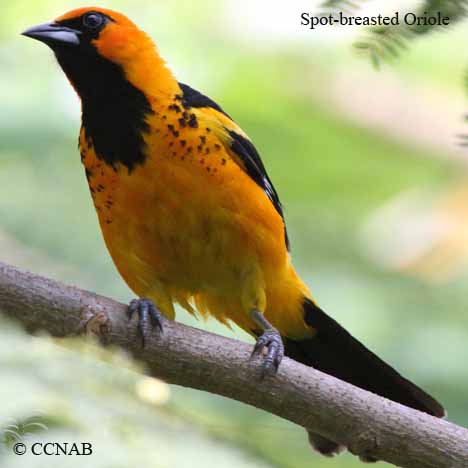
Species: The Spot-breasted Oriole (Icterus pectoralis) is an introduced oriole to North America. This native bird to Mexico and Central America was first discovered in Florida in the late 1940's and is now found in local city parks and woodlands.
Distinctions: This dark orange bird is identified by its orange head and body, black lores, back, wings and tail. Large white area on wings caused from white tertials, orange epaulette. The female is similar, except for an olive-green mantle and not as defined white epaulettes. The juvenile has olive-green mantle, light orange body and does not have dark lores.
Voice: Sound somewhat similar to most orioles songs, including the chattering notes.
Nesting: Three to five light blue or dull white eggs, with dark squiggles and one brood per year. Orioles build their nests high in the crown of trees. These nests are in the shape of hanging baskets, attached to the limbs with woven basket-like handles. The nests are built from plant fibre, bark from branches, grasses, strings and any other such materials that can be manipulated.
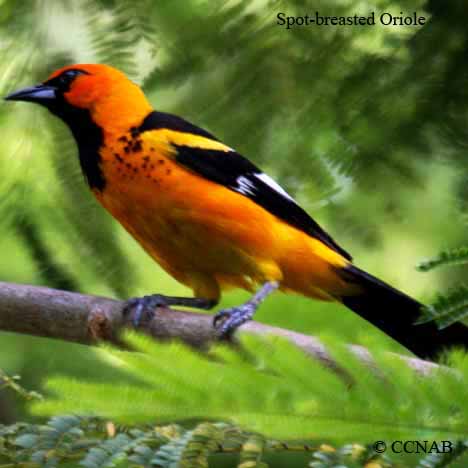
Life, Habitat & Pictures of North American Orioles
| B L | W W | W | Family | Latin Name |
|---|---|---|---|---|
| 9.5" 24.1cm | 13" 33cm | 1.5oz 42.5g | Icteridae | Icterus pectoralis |
- Summer
- Year Around
- Winter
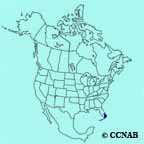
Distribution:The Spot-breasted Oriole is found throughout wooded areas, parks and residential trees in the southeast areas of Florida. The Spot-breasted Oriole was introduced to the state of Florida in the late 1940's. This is a native bird of Mexico and Central America.
Reference to Other Bird Site:
ABA - American Birding Association This site represents an organization that maintains official records of all birds species that have been proven to have been seen inside the perimeters of the North American Continent and the surrounding bodies of water. Regular revised versions are posted to keep the bird list current at all times. This is the list used by all serious birders over their lifetime. You may be aware of the movie called the "Big Year". It was with this list that all the competing birders used in an attempt to set a new record as to how many bird species that could be seen by an individual birder in one calendar year.
